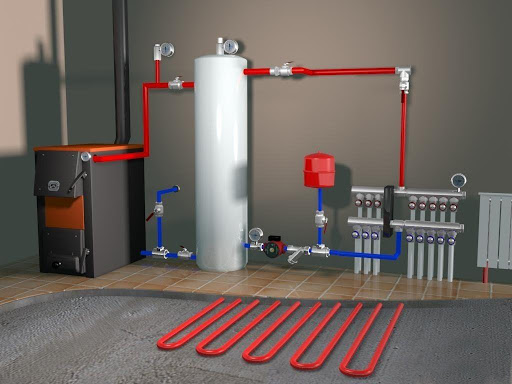Heating system of non-volatile objects away from the city utility network
Heating of remote objects requires different approaches than is customary in urban conditions. In the private and industrial sectors, located at a considerable distance from urban and large rural infrastructure, non-volatile systems are being deployed. In this case, it is important to select a heat source and a fuel system. Our company proposes to consider the installation pellet burner FOCUS with a solid fuel boiler. Such a heating system can operate autonomously, be low-cost and provide a level of comfort that is not inferior to heating by gas boilers. How is this implemented in practice?
Heating system of a production hall outside the city - the advantage of pellet technology
Pellet technology based on the installation of an adapter burner allows inexpensively organizing any type of space heating: water, air, underfloor heating, steam. It is more profitable than electric infrared heating, stoves and other more traditional methods of heating country houses, farms and industrial premises.
In fact, we are talking about alternative heating. On the one hand, the choice falls on proven methods, since wood pellets or agrepellets Is the same solid fuel. On the other hand, the method of generating heat has been improved due to the technology and knowledge of mankind. You may be interested in reading what is volumetric combustion provided by flare burners FOCUS.
Biofuels, read as "renewable fuels," are profitable according to various criteria. For example, grain pellets made from wheat hay give a fairly high heat transfer during combustion, while they practically do not emit CO2. There are other options for choosing fuel materials. These are granules from lignite, peat, animal waste and the like.
In Europe, this approach is described as a “cradle-to-cradle” economic model within a circular economy. It implies the use of waste in a different production cycle. Pellet biofuel is the best fit for this concept.
What types of heating are used in remote locations?
Whether you need heating for a production, home, farm, hotel or recreation center, there is only one approach to organizing a centralized system connected to one heat source.
Two types of heating are traditionally used:
- water;
- airy.
Moreover, air heating is preferred in fast-cooling structures. For example, in workshops, farms, greenhouses and frame houses. Water heating is effective not only when deploying a radiator circuit, but also for underfloor heating.
The heating system of two types can be provided with heat using a pellet burner, but in practice it turns out that heating with hot air is more profitable and aesthetic. Warm air masses enter the room through air ducts and grilles in the floor, no need to install massive radiators under windows and other devices.
The advantage of air heating is:
- the ability to quickly heat up the premises;
- low cost climate control;
- healthy atmosphere;
- the possibility of combining ventilation and heating.
Regardless of the room, the heating system will supply clean warm air that will maintain a comfortable temperature.
Pellet boiler room
Pellet heating is by far the cheapest way to heat houses and production. First of all, due to the availability of pellets and low fuel prices. In addition, a higher efficiency allows a higher heat transfer to be obtained. The controller and sensors with thermostats make it possible to supply heat to the rooms exactly as much as needed.
In conclusion, we note that FOCUS pellet boilers are produced with a capacity of 17 kW to 900 kW and can provide arbitrarily complex heating circuits, including heating swimming pools and hot water treatment.






